QCF: Metroid: Samus Returns
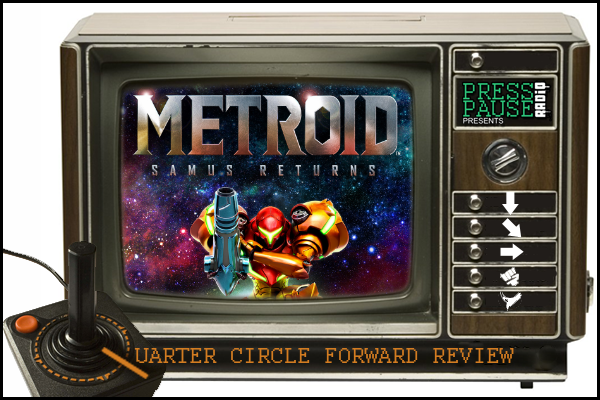
 ver since Nintendo issued a takedown of Milton Guasti’s AM2R, fans of the iconic exploration-driven sci-fi property have been chomping at the bit for a new entry, and in a surprising turn of events—the Big N responded by unveiling not one, but two upcoming Metroid titles on the docket for a future release.
ver since Nintendo issued a takedown of Milton Guasti’s AM2R, fans of the iconic exploration-driven sci-fi property have been chomping at the bit for a new entry, and in a surprising turn of events—the Big N responded by unveiling not one, but two upcoming Metroid titles on the docket for a future release.
One of them, in particular, seemed to explain the company’s swift litigatory actions with AM2R, as they teased their own remake of the Gameboy classic, aptly titled Metroid: Samus Returns. While the announcement generated all the hype you’d expect, it also raised a lot of eyebrows, as it was also revealed that Nintendo would be handing off development over to Mercury Steam, the folks behind polarizing Lords of Shadow games in the Castlevania franchise; including that sloppy 3DS entry, Mirror of Fate. Not to mention the last time Nintendo handed the reigns of series over to another studio, we were all treated to the disaster that was Metroid: Other M, resulting in a disappointing sales performance that set the property back six years until the underwhelming release of Metroid Prime: Federation Force just last year.
Metroid: Samus Returns needed to be more than some knee-jerk reaction to the fans who clamored for it; it needed to be a quality game that was worthy of succeeding the likes of Metroid Fusion, and Super Metroid…
Thankfully, the remastered take on Samus’ second adventure is easily one of the best games to have ever bear the Metroid name.
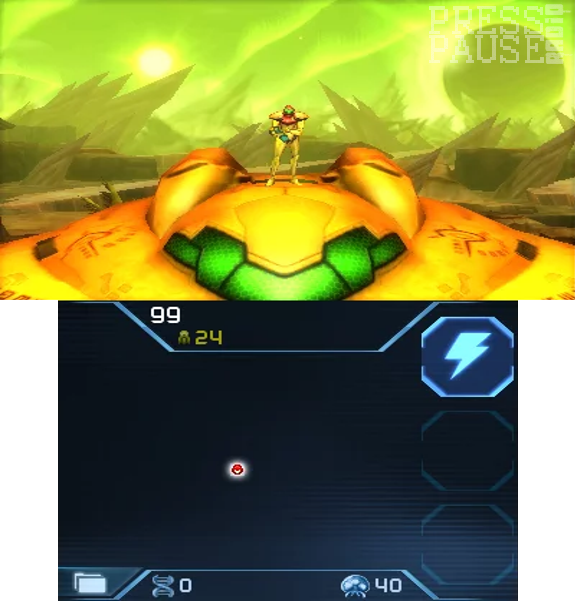
One of the defining trademarks in a good Metroid title isn’t how expansive the world can be, but how immersive it is. Despite the team at Mercury Steam having their work cut out for them with the canvas of SR388 already being mapped out, the studio managed to successfully recreate the Metroid-infested planet by literally introducing a new depth to its visuals and design as it shifts the adventure into a new 2.5D engine.
Pushing the hardware capabilities of the 3DS, the implementation of the 2.5D dynamics offer a fresh nuance to established conventions of the Metroid’s experience, which not only adds a visual flair to the presentation, but a new element of interactivity to respond with, all while keeping the action contained within a 2D plane. Granted, the interactive mechanics of the visual style are unfortunately few and far between, but when they’re used, they’re executed exquisitely well. The effects range from environmental changes within the area that offer some form of context towards stage exploration to physical bosses themselves, often performing some action that’ll scale in and out of the background and foreground during combat.
The attention to the 2.5D detail is so exquisite that Samus Returns even manages to utilize the system’s trademark 3D mode in a manner that’s unmatched by any other game released on the portable before it. Seriously, I cannot express how engrossing the graphics in the title were when the layered 3D effects of the 3DS enhanced them, it added so much to the exploration of the levels than I could have ever imagined that it would.
Mechanically, the gameplay of Samus Returns emphasizes refinement over innovation, and to be frank, that isn’t a slight against it by any means, as it effectually improves upon the formula in spite of how familiar the experience may seem. The remaster brings back the core objective of hunting down all of the escaped parasites of the franchise’s namesake, peppering in certain elements from previous titles, like Super Metroid’s explosive arsenal, Metroid Fusion’s cliff-hanging, and even Metroid Prime’s action-heavy firefights. The reiterated use of these franchise hallmarks make navigating the labyrinthine world of Samus Returns more intuitive than it’s ever been, but wonderfully does so without any concession to the density of its puzzles and obstacles.
As recognizable as it all may seem, Mercury Steam has introduced three new game-changing core mechanics that genuinely work to give Samus Returns its own identity among its side-scrolling predecessors.
The first being the most frequently used, and easily weakest of the three is the hero’s new melee attack. Ms. Aran is now able to smack her foes with a physical strike, which when performed at just the right time, can be used as a counter-attack that will temporarily stun enemies in their tracks, rendering them vulnerable for a quick one-shot kill when blasted with her arm-cannon. As neat as this dynamic may seem at first, it 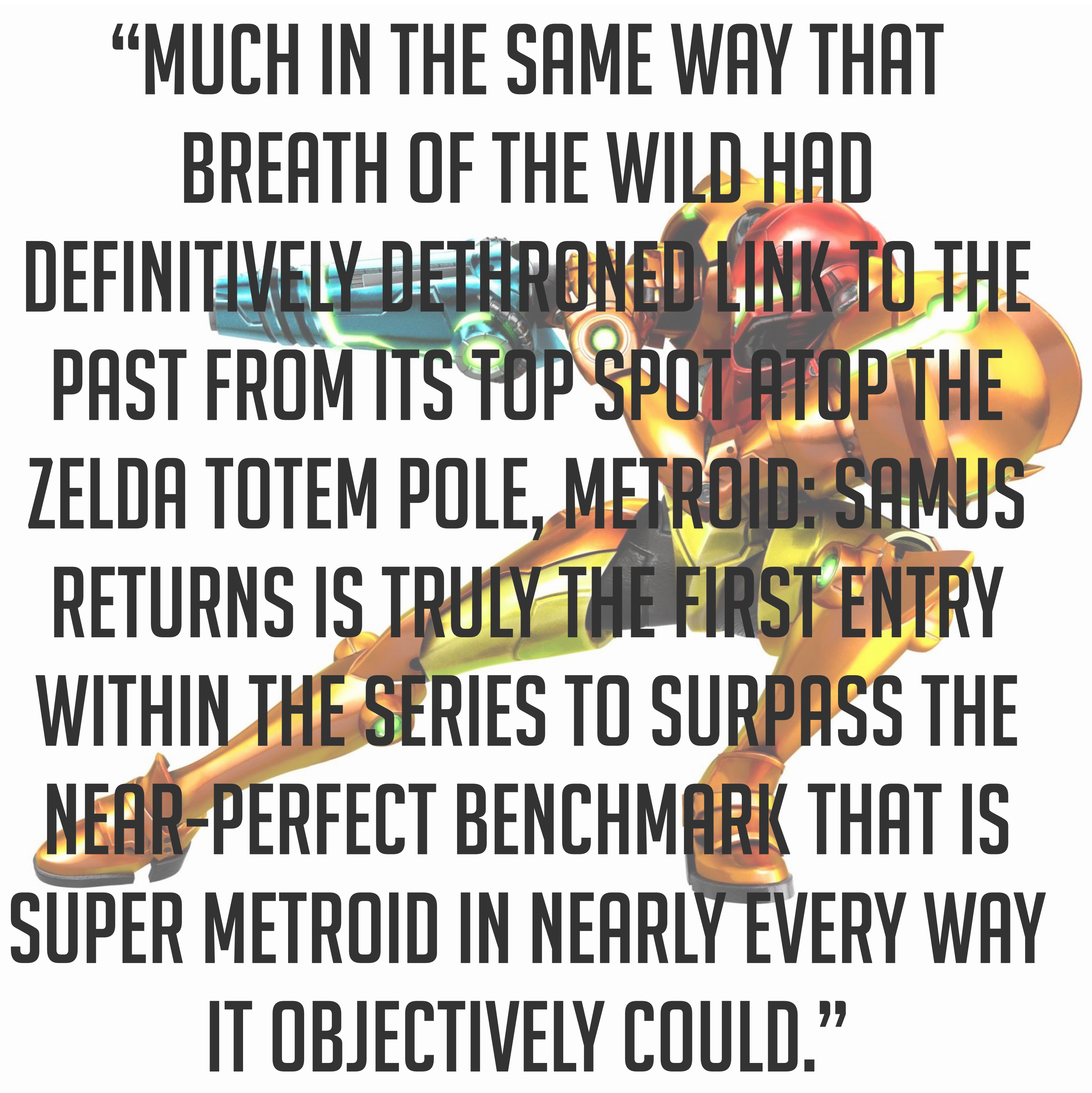 quickly wears out its welcome within just a first couple of hours the game. I’m all for shaking up the simple gunplay of Metroid with some close-quarter brawling, but not when it came to nearly every single enemy encounter in the game—and no, that isn’t some hyperbolic exaggeration; nearly, every, single, encounter.
quickly wears out its welcome within just a first couple of hours the game. I’m all for shaking up the simple gunplay of Metroid with some close-quarter brawling, but not when it came to nearly every single enemy encounter in the game—and no, that isn’t some hyperbolic exaggeration; nearly, every, single, encounter.
Every single enemy, bosses included, all attack in such a pattern that involves some sort of lunge or dive at Samus, pushing players to react with a melee strike as a response. I understand the need to engineer your enemy AI with an emphasis on a certain tactic in mind, especially when that tactic is a new feature, but not to the obnoxious degree seen here.
The second of the new features are the Aeion abilities, give players access to new powers that’re not only fundamental to solving many of the campaign’s puzzles, but are also surprisingly effective in direct combat as well.
The powers all consume special fuel of sorts known as Aeion energy, which Samus can collect from fallen foes just as she would with health recovery, or ammunition, and can be activated at any time, even in conjunction with one another. The powers range anywhere from perimeter scan that the femme fatale can trigger to ping the layout of the area, uncovering all the hidden goodies within her immediate vicinity, while other can directly augment the strength of either her armor, or firepower tenfold, coming in handy for situations that call for extra offense or defense. These abilities become just as second nature as any of the other tools that the hero has used in the past, encouraging players to exploit the pace this time around instead of merely being open to the idea.
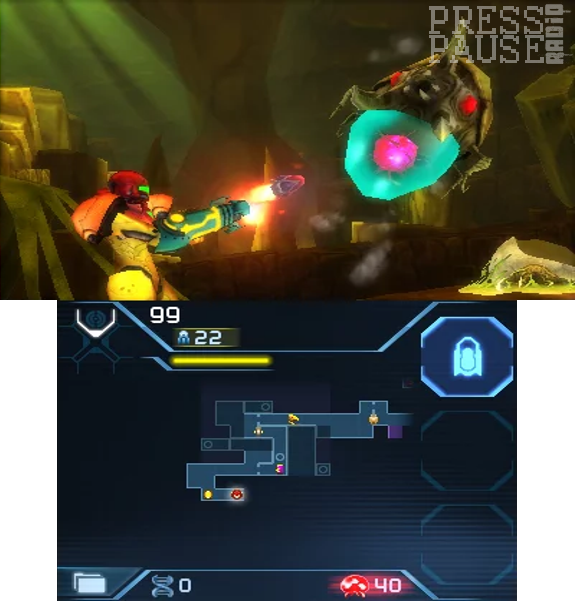
The last addition is arguably the most important; the bounty hunter is now able to aim with an eight-way trajectory that players can easily aim with full 360° control on the analog stick as opposed to the archaic Y-axis aiming that Samus was limited to in prior 2D outings. The feature may not sound like a big deal at first, but it’s much more than a shooting upgrade; seamlessly aiming in any direction also contributes to the explorative aspect of the game. By pointing her arm-cannon at different angles, Samus can discover different points of interaction that’re displayed through the changing color of her laser-sighting, even when the reticle is targeted off-screen.
Much in the same way that Breath of the Wild had definitively dethroned Link to the Past from its top spot atop the Zelda totem pole, Metroid: Samus Returns is truly the first entry within the series to surpass the near-perfect benchmark that is Super Metroid in nearly every way it objectively could.
Minor grievances with the Melee feature notwithstanding, Samus Returns is nothing short of a masterpiece, and is not only a must-play for fans and newcomers alike, but it also lives up to be one the best reasons to still own a 3DS, especially in a world where the Nintendo Switch exists.
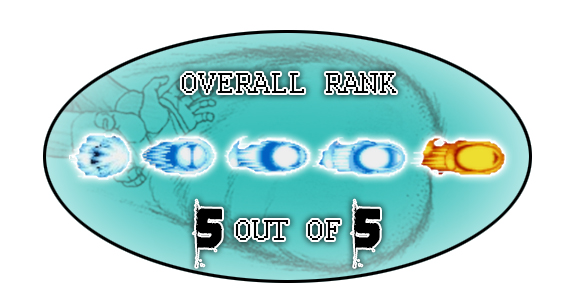
 Mercury Steam,
Mercury Steam,  Metroid,
Metroid,  Metroid: Samus Returns,
Metroid: Samus Returns,  Nintendo,
Nintendo,  Nintendo New 3DS,
Nintendo New 3DS,  Samus Aran | in
Samus Aran | in  QCF Reviews
QCF Reviews 









